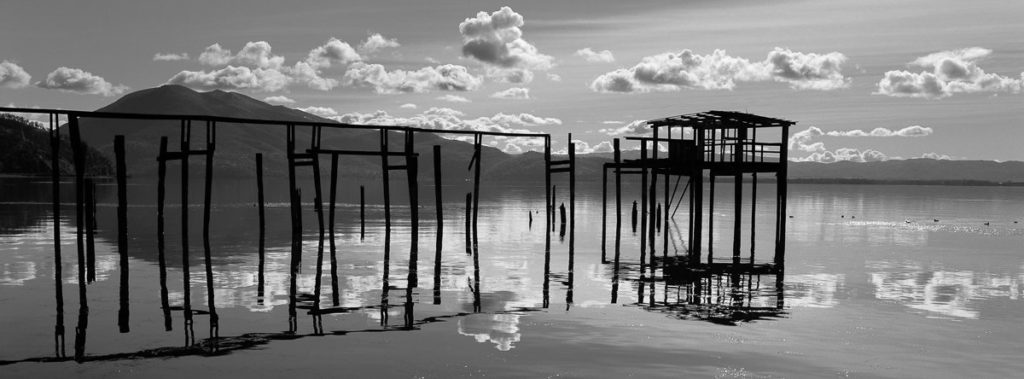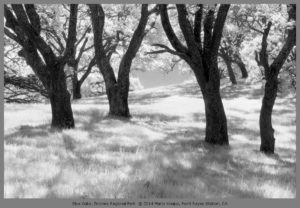What shooting film taught me: Think More and Shoot Less
There are many reasons I love using digital technology to make my photographs. The immediacy of the capture process invigorates my creativity and the quality of the printed image exceeds my expectations. Digital photography has a number of clear advantages over traditional film/darkroom technology. However, one digital advantage was so attractive, that, for a time, it seduced me away from the way I create my best photographs.
Some things I love about digital photography:
• Instant image capture provides powerful feedback loop for confirmation and/or adjustment.
• Development of the negative and print in safe fresh air instead of hazardous, smelly chemicals.
• Prints are superior in visual quality to previous darkroom prints.
Here’s the feature that got me, temporarily derailing me from my creative rhythm:
• Tiny memory cards that hold a seemingly inexhaustible number of captured images.
A Great Feature?
Wow! Why wouldn’t I want an endless supply of film, taking up virtually no space and weighing next to nothing? Wouldn’t you? Maybe if you never shot film, this potential wouldn’t seem so incredible. But, coming from where I was, this was like winning the lottery, or finding a pot of gold. When I wired with film I’d keep track of how many exposures I had left, making sure I’d save several frames for the magic hour – the time when the good light might come. My film was a precious commodity and as such was allotted out carefully. But, now, through the miracle of digital I could make as many photos as I wanted… any time I wished. The days of counting exposures and rationing film was over. Boy, was I seduced!
What Went Wrong?
I was wealthy beyond my imagination. Or, was I….? At first, I shot like a madman. I was the crazy guy in the desert, who when finding a pool of water from which to drink, starts scooping it up and pouring it over his head. I had it all..everything but the yippee! I shot wildly for the first few times, happy to never run out of my digital film. I was sure that I was getting lots of great photos, as I jumped from one great scene to the next. Each evening, though, my spirits sank as I reviewed the results on my laptop screen. I spent a long time sorting through the hundreds of images searching for winners. Usually, there were none. Something was missing, something that volumes of shooting wasn’t providing. I wondered what?
A Lesson from the Past
As I thought about what went wrong, I remembered how I had worked when using film. Things had changed. Now, in my current excitement to make lots of images (because I could!), I was going so fast that I had lost my focus, my attentiveness to my subject, the landscape. Previously, when shooting film, its scarcity and made it precious – it slowed me down. The film attained value, and as I conserved it I became more conscious of how I went about making an exposure. My tempo in the field, seemingly driven by the scarcity of the film, also had a positive side-effect on my awareness. I had developed a heightened consciousness and care about every photograph I made.
Less Really is More
Since this realization, I’ve changed the way I work, returning closer to the method I used with film. Just because I can make tons of exposures, doesn’t mean I should. I now work much the same way I used to work with film. I slow down, examine my subject from every angle, consider if there is even a photograph worth trying for. In short, I think more and shoot less. Because of this, I now find a higher percentage of my compositions have value. They express a deeper way of seeing and are imbued with the thoughtfulness that occurs when enough time is allotted.
Getting Connected
There is another benefit to a practice of careful, thoughtful shooting. By making fewer exposures, you will be more connected to the ones you do make. The increased attention you give to your photos will bring you to a deeper connection with them and you’ll better understand both your successes and failures. This feedback will provide you with accelerated improvement in your expressive work.
Precious Time
One of the greatest wealths you will obtain is time. The hidden cost of mindless shooting is the loss of your precious time… time lost not only while you were making all those poorly considered images, but again, later, as you sort through and then trash the hundreds of bad photos you made. Your time is the only wealth you’ll never recover when it’s gone. I hope you’ll consider that the next time you go out photographing. Think more, shoot less and be glad you did!


This article and its comments were helpful for me. My field is ceramics. I have always worked / produced at a much slower pace than most. Like film, a bag of clay is fairly expensive. And there are already so many “things” in the world, I think why fire something / put it in a permanent state if you are not quite happy with the piece at the greenware stage. I no longer have my own studio and instead I now work at a community studio and find I’m probably firing 1/4 or 1/5th the amount that others fire in a one month’s time, which at times makes me feel like I should work faster. However, each time I do push myself to work faster I find my work is okay but usually lacks something that makes it special. So I’m trying to learn to be satisfied with working at my own pace and cease the volume comparison.
Hi Marty.
I agree with you…but having had lots of years shooting and printing as you have, Marty, I still shoot more than needed.
The bulk of the photos allow me to reflect on the subject.
Of course, I would only present the best. I learn from the others.
Steve
Steve,
Great to hear from you! Thanks for commenting.
I should have been clearer. I, too, shoot more than needed, and definitely more than I did while shooting film. My film shooting protocols acted as a reminder to me to stop and consider the scene more. I would say I probably shoot about 3-5 times more exposures with digital on a given subject, but not the 10 -20x number that I first shot when I started out in digital.
-Marty
As a commercial artst budget is always a factor. Certain image persuits simply demand a lot of exposures. That is a place where digital capture and its long-winded abilities comes in really handy.
Here at the Laney College Photo Department work to get our students to slow down and think about what they are doing. We have to counter the immediacy of computers and phone cameras and online sharing.
In a funny way while computers were supposed to give us more free time they really gave us, instead, the power to do more in a volume sense with potentials for higher quality. We can all get crazy with that just as we can lose the value of a chainsaw and cut things down because we can, only stopping when we run out of gas. That hardly means that an ax is preferred unless that particular labor is your jones which is separate from the value inherent in cutting down trees. Our decision to cut down trees in some considered fashion is a skill to be used in both instances.
So, rather than let the machine run away with us, we slow down and harness the machine’s power for the quality it can provide us enjoined with our creative process of vision and skill.
There are those who say that film makes you think more because it has to be more deliberate. Yet deliberation is independent of media. We go slow with film because it is naturally slow, not because it is innately a more sound process: we have no choice. That hardly makes film a value in and of itself. It just illuminates the value of temperance and thoughtfulness, qualities absent which film can be awful, too.
Michael,
Thanks for these observations. I prefer digital to film even though I have put in 30-40 years making negatives and printing my film in the darkroom. I’m glad to hear you encourage your students to be more thoughtful. It is exactly what I teach other photographers. Try to overcome the temptation to shoot at high voume just because you can!
-Marty
Hi Marty,
I guess I’ll not make it up to Point Reyes at all this year but thankfully your newsletter serves to remind me what a lovely place it is and also to go look at the prints I bought. I now have a few thousand indifferent photographs of my own on my computer. Pictures that I’ll almost certainly never look at again. You are so right! How much better is it to have a few shots, taken with care and forethought.
Tom
Thanks, Tom. Originally, all my triptychs were made from separate shots as a way to extend the panoramic view of the landscape. The Olema Hill Triptych is the first one I deliberately divided up. It delighted me to see it take on this new aspect. I’m glad you like!
-Marty
This can also apply to writing. The digital world has equally impacted the written word and how it is perceived. Publishing has completely changed. Whether one is writing fiction or nonfiction, the audience is less accepting of a ling winded author. One’s work must be spare, impactful, and truly beautiful to be real.
Here! Here!
Well said, Susan.
Thanks,
Marty